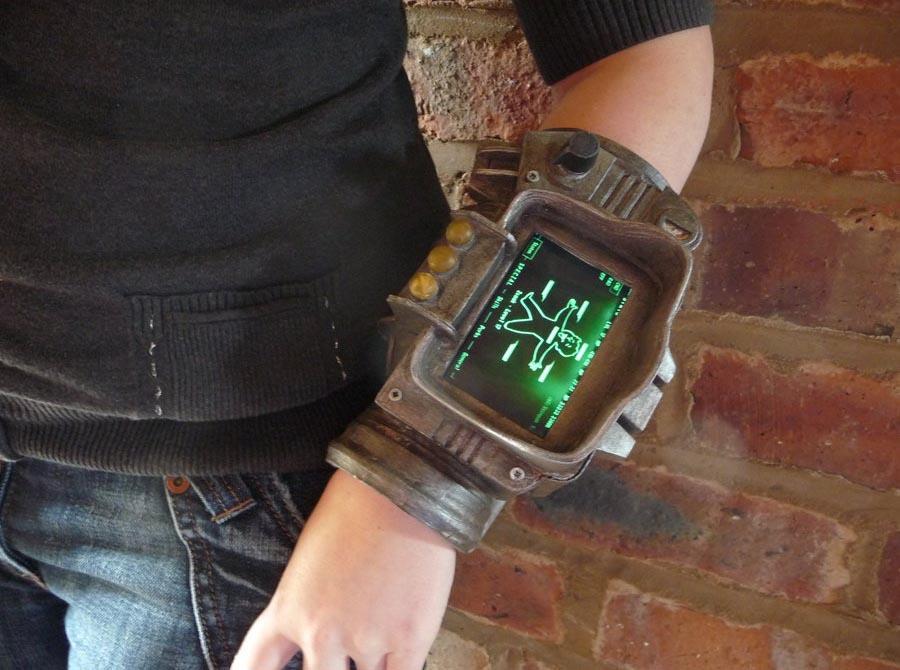
Smartphone innovation kicked into high gear just two years ago with the popularization and mass adoption of Android. Manufacturers have been perpetually spitting out new phones like they're going out of style and have managed to push the limits of mobile technology beyond what we ever could have imagined possible in such a short time.
Eventually, simply adding better specifications will exhaust the classic candybar form factor (as it if weren't already exhausted); thus, OEMs will start exploring new form factors that make the smartphone experience all that much better or unique. In fact, many already are or already have.
A report coming from The New York Times claims that both Apple and Google have spent the last year exploring wearable computing in secrecy. As these R&D projects are still mostly under wraps, we're not 100 percent sure what they entail. But Nick Bilton of The New York Times explains, "In Google’s secret Google X labs, researchers are working on peripherals that — when attached to your clothing or body — would communicate information back to an Android smartphone." Apple, we would assume, is exploiting the interest in the iPod Nano that unexpectedly turned into a rather popular watch, and making a similar but more advanced device that will communicate with iPhones, iPad and other iPods.
It's not all just about consumer wants or needs, or how stagnant new devices will become, though. It's about improving ergonomics and solving the existing problems that smartphones create. Bilton explains, "The invention of the smartphone has created a world where millions of people stroll through life constantly staring into a mobile device, like Narcissus at the edge of a pond." Creating a device that would keep our eyes off of a smartphone display for just a short while would be a welcomed change.
The first wearable devices popped up in 2009 as actual watch phones, like the LG Watch Phone. And the the Motorola Tracy XL made a accidental appearance on Motorola's website in June of this year (which mysteriously and sadly never happened). There were also peripherals, like the Bluetooth-powered inPulse Smart Watch, that communicates with a smartphone and displays information like the phone's battery level, text messages, emails and more. Future devices will inevitably expand on this.

Pretty intriguing stuff, right? These devices, these peripherals, would only be the first step towards wearable devices, though. It's safe to assume that the push for wearable computers (read: smartphones) would not stop there. Things like this always kick my brain into overdrive. Where would things like this take us? What would they lead to?
Senior researcher specializing in wearable computing at the Institute for the Future in Palo Alto, California, Michael Liebhold, believes that over the next 10 years people will be wearing glasses with built-in displays, and eventually connected contact lenses with working displays – this is where transparent technology becomes viable, this is the endgame, not a fully transparent phone or tablet. Liebhold predicts these devices will blur the lines between reality and virtual worlds.
Such in-depth connectivity could lead to smart clothing that could give your real time stats on your body – calorie counters, blood pressure and heartbeat monitors, etc. Pipboy 3000, anyone? Obviously, nobody would want something that bulky, but that's the general idea here, a wearable device that gives the wearer real time, in-depth info on their health, location and pretty much anything else your typical smartphone could give, all at the convenience of your wrist, the blink or an eye or some other futuristic implementation using nanotechnology.
Things like this would be especially useful to soldiers.
Companies like Nokia and Samsung have been pushing flexible display technology and the possibility of flexible, dynamic devices. And we've encountered a few concepts that take the idea of flexible devices and turn smartphones themselves into wearable devices – for example, the Galaxy Skin concept that appeared in September. Instead of having a peripheral around your wrist and phone in your pocket, your phone could be the watch that wraps around your wrist.
It's all a bit much to take in at once. Here we are in 2011 focusing mostly on the internals of a device. But rarely do we think about what the future may hold. Do any of you hope to see wearable phones and peripherals – even connected clothing – in the near future? At CES? Or would you prefer to stick to the typical candybar phone?